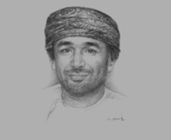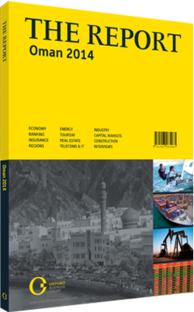OBG talks to Abdulrahman Al Hatmi, Director, Oman Rail Project

Interview: Abdulrahman Al Hatmi
How would you rate the interest that the project has received from potential bidders for the consultancy and pre-building phases of the railway?
ABDULRAHMAN AL HATMI: Numerous companies from diverse business streams have expressed tremendous interest in the project. This was demonstrated at the Oman Railway Forum at which many attendees had come from as far away as Europe, the US, South-east Asia and India. It is also worth noting that this interest has come from a wide array of sectors, most notably construction, engineering, law firms, service providers, facility management companies, and local and foreign investors.
They are very keen to take part in the development phase and as a result are curious as to what gaps require filling in the various segments of the railway. In terms of geography, Oman is a large country so technically speaking, the railway is a challenging project. Companies tend to like difficult projects as it provides them with a learning opportunity, translating into future credentials for participants. This is especially true when it comes to tunnelling through mountains and unique alignment designs which the railway will require. Oman’s distinctive geography is therefore considered attractive by investors, as is the country’s record of political stability and the transparency of tendering procedures.
To what extent will it be feasible to aim for multi-modal integration in the transportation sector?
AL HATMI: The achievement of multi-modal integration will be an essential step in the evolution of Oman’s transportation sector as well as for the broader aim of economic diversification. For example, the ports will be a key revenue contributor to the railway, as without the ports there would be no strategic need for a railway in the first place. Above all, we have asked what role the railway will play in diversifying the domestic economy, and how the various components of Oman’s transportation sector can work together to maximise and exploit the full potential of the railway to achieve economic growth. To do so, we assembled a group to look at exactly what role logistics will play in future contributions to GDP. Our findings have led us to the realisation that the ports need a railway, and that the railway would in turn benefit from the ports. In this way, the project represents a convenient confluence of several strategic objectives. In addition, we must also consider infrastructure, operations and human capital. Lastly, there is the socio-economic aspect, to do with finding ways to support local companies in Oman. We are working together and conducting studies to figure out how to attract investors, and of course, there is also an indirect revenue stream waiting to be tapped. Specifically this involves using the free zones and commercial hubs to attract value-added industries to the ports. If we follow our strategy then we will achieve multi-modal integration as well as economic prosperity for Oman.
Given the mixed record of public-private partnerships (PPPs) elsewhere in the world, how will the engineering and construction phase be financed?
AL HATMI: We have just finished conducting a study on PPPs and will begin entering negotiations with potential investors in the first months of 2014. Currently, the government is financing the infrastructure used for the railway project. While the private sector could theoretically finance infrastructure through capital expenditure, in practice various issues must be considered beforehand. To begin with, there is the perennial problem of time: it can take up to 18 months to close a deal on a PPP, and we do not have that kind of leeway in the initial phase of the project. Indeed, this is one of the few constraints under which we work when obtaining funding for infrastructure with capital expenditure.
However, we are still considering different options on how to fund infrastructure for segments that are profitable and feasible for the private sector, including operational maintenance. At the same time, the capital and operational costs of the rolling stock, the trains themselves, will be offered as a PPP. We will dedicate all of our attention to resolving this issue in 2014.
You have reached the limit of premium articles you can view for free.
Choose from the options below to purchase print or digital editions of our Reports. You can also purchase a website subscription giving you unlimited access to all of our Reports online for 12 months.
If you have already purchased this Report or have a website subscription, please login to continue.

